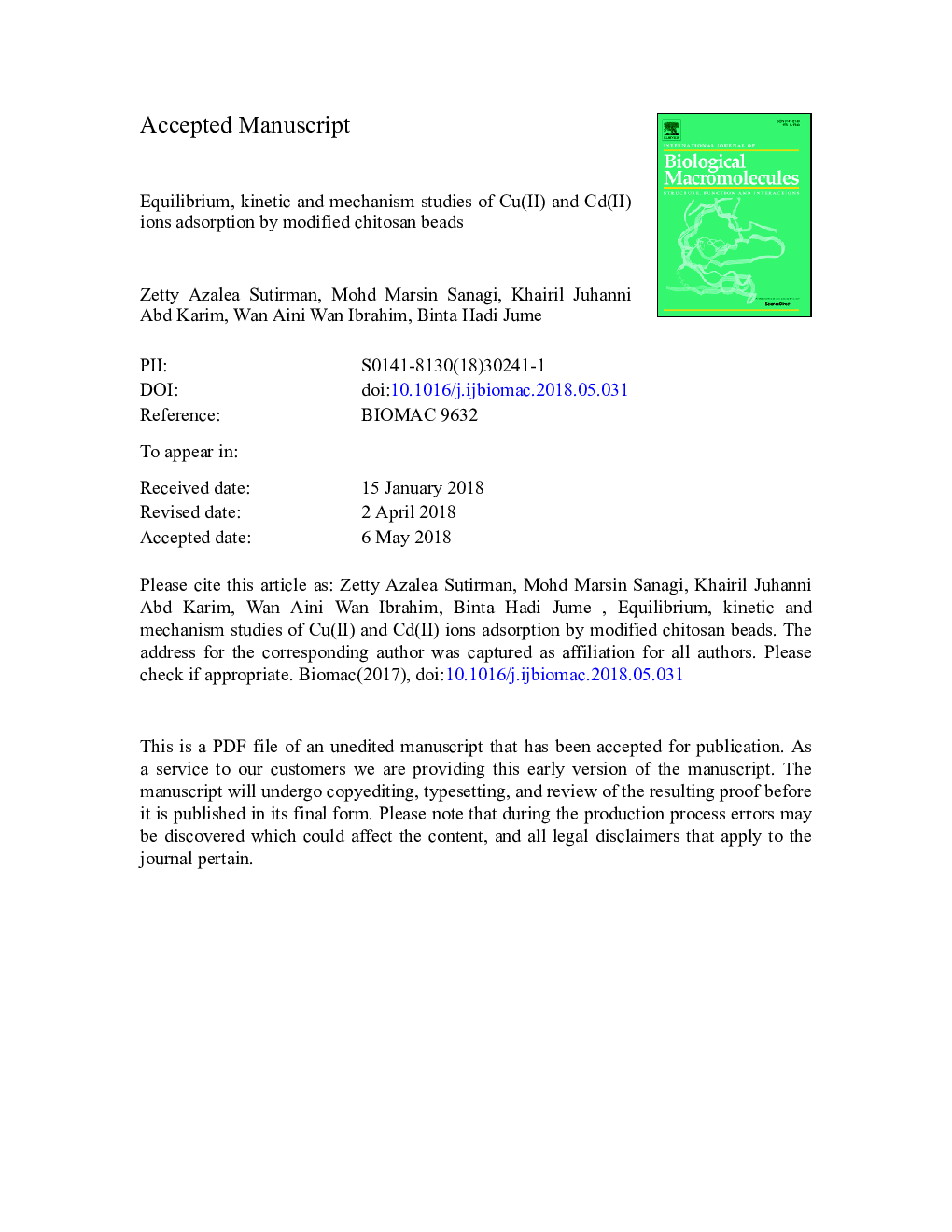| Article ID | Journal | Published Year | Pages | File Type |
|---|---|---|---|---|
| 8327063 | International Journal of Biological Macromolecules | 2018 | 33 Pages |
Abstract
In this study, the Cu(II) and Cd(II) ions removal behavior of crosslinked chitosan beads grafted poly(methacrylamide) (abbreviated as crosslinked chitosan-g-PMAm) from single metal ion solutions was investigated. The modified chitosan beads presented a remarkable improvement in acid resistance. The batch experiments demonstrated that pH of solution played a significant role in adsorption. It was found that the adsorption of Cu(II) and Cd(II) were optimum at pHâ¯4 and pHâ¯5, respectively. The maximum adsorption capacities for Cu(II) and Cd(II) based on Langmuir equation were 140.9â¯mgâ¯gâ1 and 178.6â¯mgâ¯gâ1, respectively. Pseudo-second order gave a better fit for adsorption data with respect to linearity coefficients than pseudo-first order suggesting that chemisorption or electron transfer is the dominant mechanism of the metal ions onto crosslinked chitosan-g-PMAm. In addition, X-ray photoelectron spectroscopy (XPS) investigations revealed that adsorption of both metal ions took place on the surfaces of crosslinked chitosan-g-PMAm by chelation through CNH2, CO and CO groups. Overall, the modified chitosan has proved a promising adsorbent for removal of metal ions.
Related Topics
Life Sciences
Biochemistry, Genetics and Molecular Biology
Biochemistry
Authors
Zetty Azalea Sutirman, Mohd Marsin Sanagi, Khairil Juhanni Abd Karim, Wan Aini Wan Ibrahim, Binta Hadi Jume,
